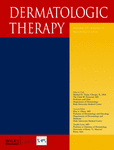Is the step-up therapy of topical 5-aminolevulinic acid photodynamic therapy effective and safe for the patients with recalcitrant facial flat wart?
Abstract
Facial flat wart, caused by human papilloma virus type 3 and less often, type 10, 27, and 41, often brings many cosmetic problems to children and young adults. Considering the disturbing cosmetic problem, the treatment of facial flat wart is always frustrating and often unsuccessful, although there are many treatment modalities. Considering the possible serious side effects of 5-aminolevulinic acid photodynamic therapy (ALA-PDT), we designed step-up therapy of ALA-PDT on different clinical phases of facial flat wart. As a new protocol of ALA-PDT, we found the step-up therapy of ALA-PDT could also receive excellent effects with the lower side effects. Meanwhile, the tolerance of patients to ALA-PDT could improve with subsequent treatment sessions and escalating doses of ALA-PDT.




